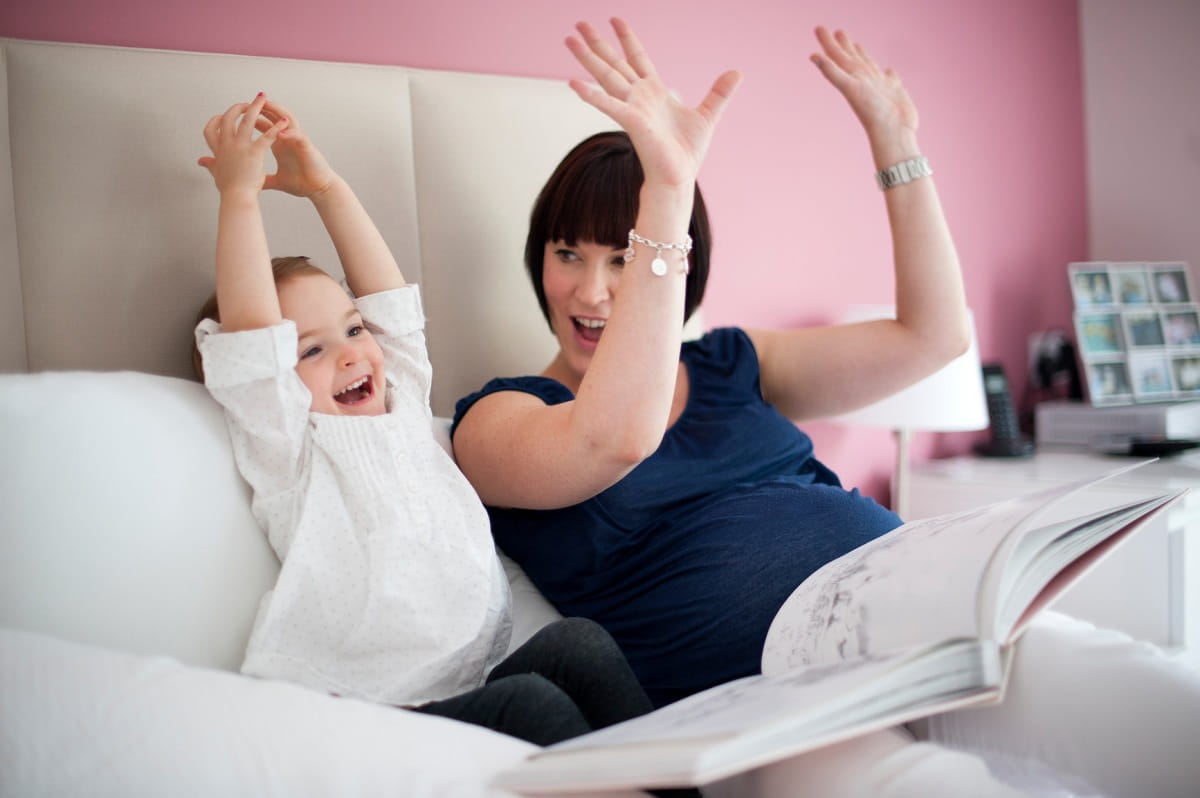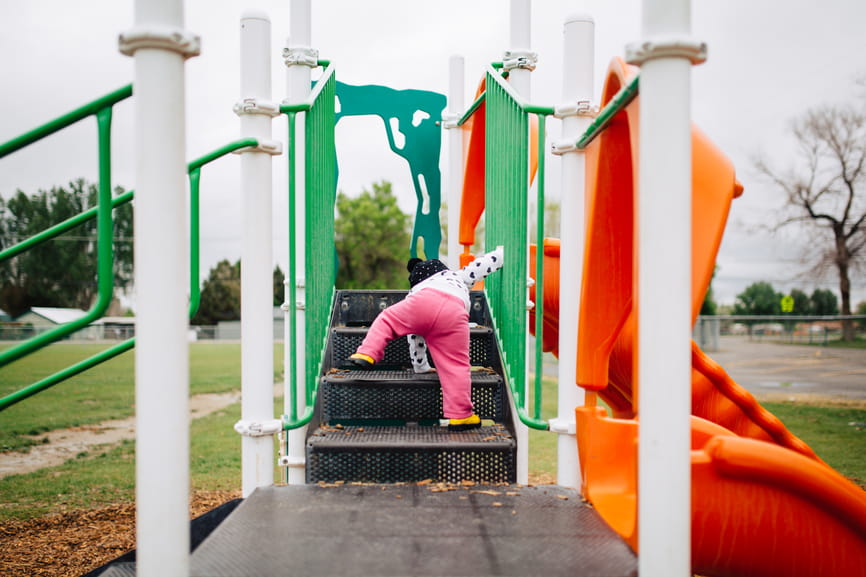Talking to Your Kids About Disabilities
7-minute read
At KinderCare we recognize and celebrate our differences through disability awareness. To help you start the conversation about disabilities at home, we are sharing tips for talking to your children, plus what we’re doing in our centers:
- Be open to questions to acknowledge our differences, even when your kids loudly point out another person’s differences in a public place.
- Ease anxiety by explaining that they can’t “catch,” a disability, it’s what makes us all unique.
- Address the person first, then the disability, and use respectful terminology.
- Make a connection by focusing on shared similarities rather than differences.
- Explain equipment and service animals.
- Research answers and reconnect with your kids if you got something wrong when you first talked about it.
At KinderCare we recognize and celebrate our differences. Through disability awareness, we can help move past stereotypical mindsets and work towards a positive and welcoming community for all.
To help you start the conversation about disabilities at home, we are sharing tips for talking to your children as well as what we are doing in our centers. But first, we want to introduce you to Leo. This awesome 8-year-old is sharing his story about what’s it like to have a disability and what he wants you to know about disabilities.
6 ways to start the conversation
As tempting as it is to shush your kids when they loudly point out another person’s differences in a public place, use these moments to talk openly and respectfully about it. Watch this video of KinderCare’s Rashelle Chase talking about how to make this awkward situation teachable. Then, check out other ways to support these conversations when they pop up.
Be open to questions. Children are taking in, sorting, and classifying new information all day long. So, when we don’t address differences in others, they can become confused and interpret it as “bad or wrong.” By not acknowledging our differences, we devalue the other person and unconsciously teach that the differing ability is something to be ashamed of. Showing that a disability isn’t bad, just different, makes for more accepting, supportive, and considerate kids.
Child: “Why is he yelling like that in the restaurant?”
Adult: “Sometimes big places can be really loud and overstimulating. His mommy is talking to him and helping him. I bet he’s a nice kid and just having a bit of a hard time right now.”
Share what it is and what it isn’t. Ease any anxiety about disabilities by explaining that it’s not a disease they can “catch,” but instead it’s just another way that people are different, and that differences are what makes us all unique. Some disabilities are on the outside and others are on the inside, some people are born with them and others have happened after an accident or illness.
Child: “Why does she walk like that, what’s wrong with her legs?”
Adult: “There’s nothing wrong with her. It looks like she uses crutches to support her in walking. There are many ways that a person can get around and not everyone's bodies work in the same way.”
Use person-first language. Address the person first and then the disability so your child can understand that a person is more than a diagnosis—and use respectful terminology. For example: this is Timmy, he is visually impaired, and this is Sam, he is diagnosed with Autism.
Make a connection. A person’s disability is only part of who they are, so focus on similarities rather than differences. Talk about shared interests and abilities: art, building, being outside, TV shows, games, running, music, favorite foods, and more!
Explain equipment. People with disabilities use accessibility devices or adaptive equipment, and while they may look like toys, they are tools to help them each day. Some examples are wheelchairs, forearm crutches, hearing aids and cochlear implants, and service dogs. If you see someone with a service animal, explain that as much as we want to play with them, the animal is working when they are wearing their vest.
Continue the conversation. It’s OK not to know every answer in the moment. Research answers to questions your child has asked and reconnect with them if you got something wrong when you first talked about it. When picking books to read and movies and TV shows to watch, choose some that depict people with disabilities in a positive light or even the hero of the story!
How our teachers are talking about disabilities
In our centers, we provide a safe space for children to explore the world and who they are. So, this month we are celebrating our differences as we help children learn about disabilities, in keeping with the lessons we teach children every day about belonging. To begin, we will bring awareness to visual and hearing impairments, physical disabilities, learning and language, and behavior disabilities. Then, we will encourage empathy building by making the connection that we all use tools to accomplish tasks each day and introducing a few tools used by people with disabilities, like Braille, American Sign Language, and adaptive equipment. Lastly, we’ll teach children the importance of acceptance by normalizing disabilities and differences while showing how to support and stand up for people who have disabilities through advocacy.
By continuing these conversations and talking about our differences and similarities, children will see that disabilities are natural and simply a part of being human.





